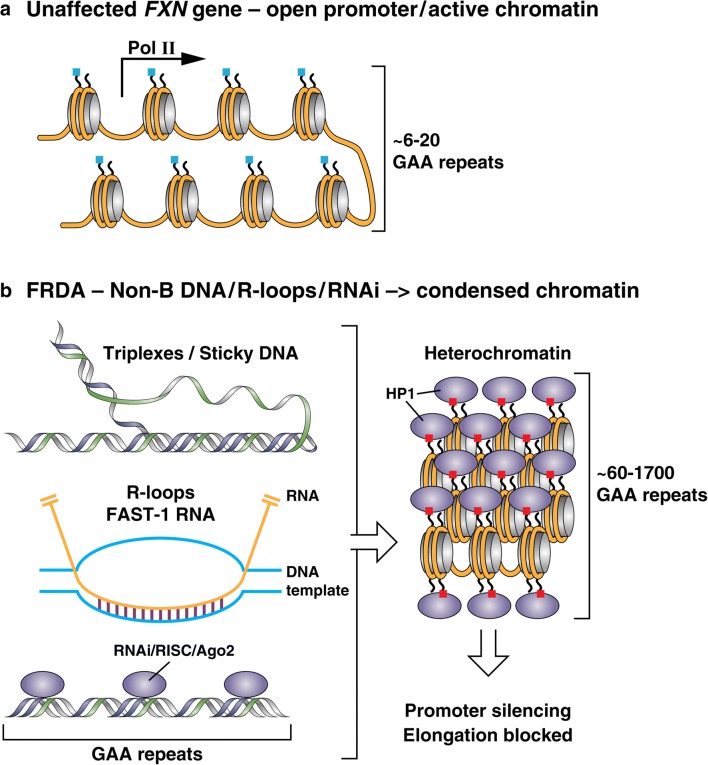Fig. 1.
Mechanisms of FXN gene silencing. (A) In cells from unaffected individuals, the FXN gene, with short lengths of GAA·TTC repeats, is packaged in open chromatin, allowing RNA polymerase II (pol II) access to the promoter and allowing elongation through the repeats. Nucleosomes bear highly acetylated histone (blue marks on the amino-terminal tails of the histones). (B) In FRDA cells, the FXN gene is packaged in condensed heterochromatin, having particular types of histone methylation marks, such as H3K9me3 (red boxes on the amino-terminal tails of histone H3), which forms the binding site for heterochromatin protein HP1, leading to chromatin condensation. Several models have been proposed to account for heterochromatin formation by long GAA·TTC repeats, including triplexes and/or sticky DNA; R-loops that recruit the heterochromatin machinery; short RNA transcripts that recruit components of the RNA interference machinery; and an antisense transcript called FAST-1, which depletes the chromatin boundary protein CTCF, leading to heterochromatin. All of these mechanisms could lead to promoter silencing and blocking transcription elongation through the repeats

